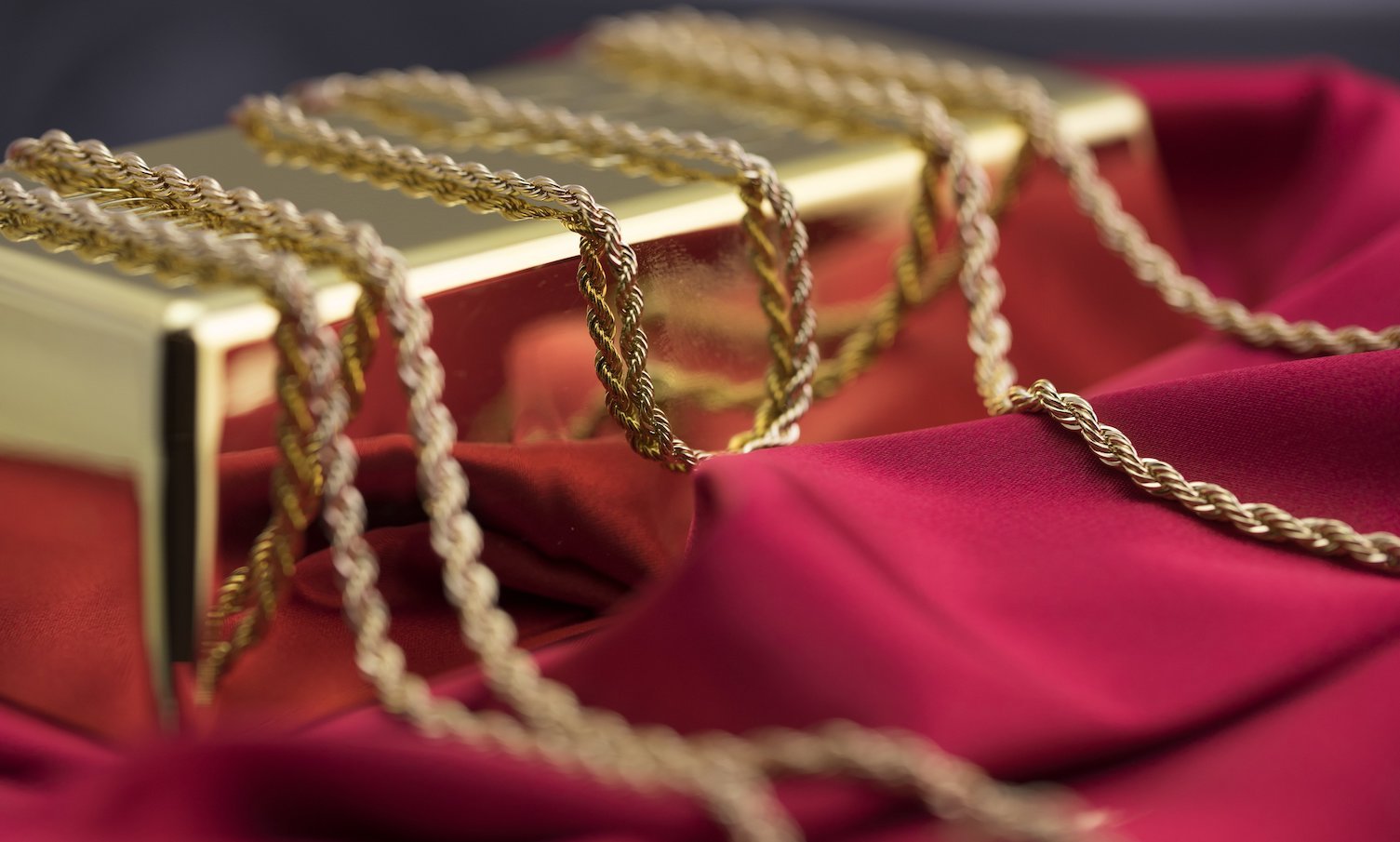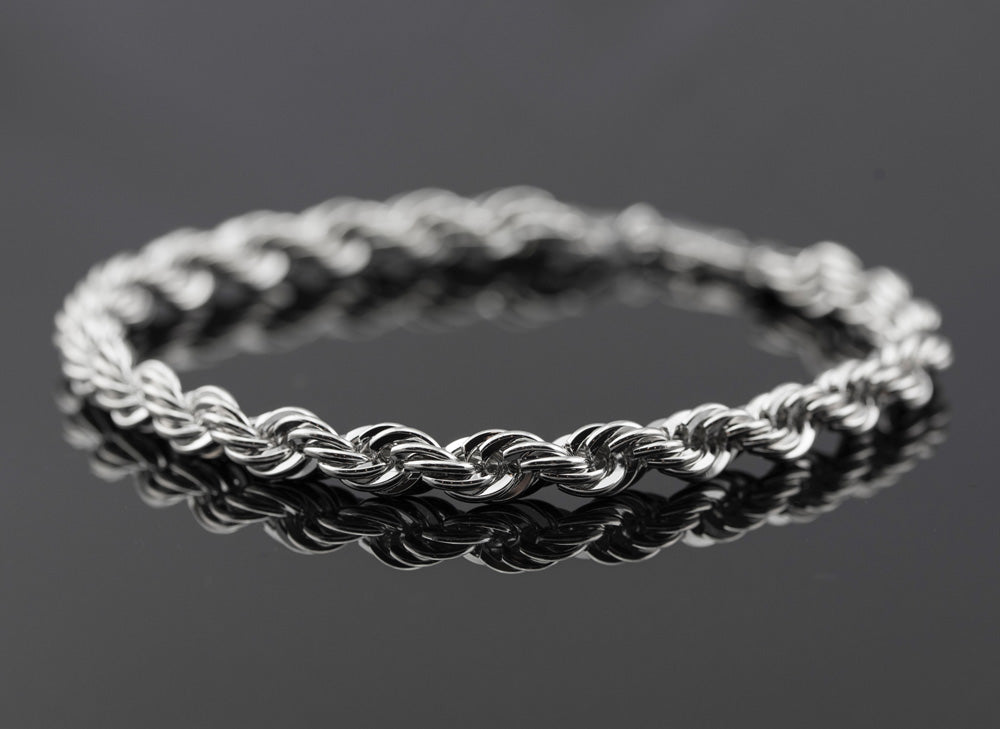Everyone loves Gold jewelry, but the prices really bite, especially when you are on a budget. The problem is, all of us like to look good and there is nothing like adding a touch of glimmer to almost any outfit.
There is something about gold that attracts attention. It represents status; it’s a symbol of beauty, class, virtue and high value. It’s been used to represent things we desire for millennia. According to existing myths, gold has been coveted as far as we can remember being human.
Yet not everyone can afford gold and for many the only way to still have that glittering noble look without paying an arm and a leg is to buy gold plated jewelry.
Some have misgivings about gold-plated jewelry. It is not considered “the real thing” and often has been known to tarnish.
The good news is that gold plating quality can vary. From one company to the next it can widely differ. Generally speaking, the quality depends not only on the thickness and purity of the gold coating, but the base metal used for the jewelry, and the minerals used to bond it. Then there’s the durability and quality of craftsmanship. Well made plated gold can be almost impossible to distinguish from solid gold jewelry just by looking at it. Sometimes when you hold it in your hand, high quality gold-plated jewelry can have the weighty feel of solid gold as well.
As with all cheaper things, there are drawbacks to gold-plated jewelry, particularly when the quality is not high. Tarnishing and fading are the most common issues. Again, it depends on how well it’s made.
Not sure if gold plated jewelry is for you?
Not sure you can trust it to make you both look good and to last you long enough?
We’ve got you covered. In this guide, we outline 13 things you need to know about gold plating before you buy.
3 - What metals can be gold plated?
4 - Is gold plated jewelry real gold?
5- How thick should gold plating be?
6- Is gold-plate jewelry worth anything?
7- Does gold plating fade and tarnish?
8- How long does gold plating last?
9- How do I look after gold-plated jewelry?
10- How do I know if my jewelry is gold plated?
11- Who buys gold-plated jewelry?
12- Is gold plate hypoallergenic?
1- What is gold plating?
Gold plating is a process of bonding a thin layer of gold to a base metal. Ideally the core it is plated over is made of materials that bond well with gold.
Fashion jewelry commonly consists of gold and Rhodium (Rhodium is a white gleaming precious metal used in making white gold) plated over a bronze core.
Electroplating has been in use commercially since the 1840s and has been heavily refined since that time.
Gold plating is commonly used for costume jewelry or to replace more expensive pieces with replicas. It is nearly impossible to see the difference between original expensive pieces of solid gold jewelry and their inexpensive gold-plated imitations.
The image below shows two chains. One is a gold-plated necklace (worth a hundred dollars.) The other is solid gold and costs over $1,000. Very often, even professional jewelers can’t tell the difference between these two. (I tested this by going to 12 separate jewelry stores). It would be even harder for your friends or acquaintances to tell which is which!
These chains weigh almost the same, as you can see in the video below.
Lifetime Jewelry Explainer Video
2- How is gold plating done?
Gold plating (also called electroplating) is a process which uses electricity to coat a metal object with a very thin layer of gold. It’s an electrical and chemical reaction where the object to be coated is immersed in a bath filled with a solution of a metal compound intended for the coating, and a direct current is run through the object. This results in a layer of the gold being bonded to the surface of the object. While this layer is extremely thin, the bond is very strong. If done properly, it will not peel or separate in any way.
The surface to be plated needs to be thoroughly cleaned and polished before the process because the plating will look uneven and smudged if the surface is dirty, oily, scratched or otherwise damaged. Steam, ultrasound and electro-cleaning are used to clean the object to be plated. Electro-cleaning is a very effective method of cleaning with electricity and cleaning solution used together.
Usually, after the surface of the object is completely clean, a thin layer of nickel is plated onto the base metal. This protects the gold layer from the base metal by preventing the core metals from leaching into the gold, and thus tarnishing it.
Next the gold plating process is repeated. The duration or number of times it’s done determines the thickness of the gold layer. After that the jewelry is hung to dry.
3 - What metals can be gold plated?
Gold plating can be used on almost any metal, including brass, copper or nickel. Silver items can also be gold plated. We use a proprietary process involving the combination of several semi-precious metals which has been tested for strength of bond.
Sometimes a thin layer of copper is added before the nickel to preserve the gold color longer. This is usually done when plating silver.
There are newer methods using titanium nitride as a rough layer before the gold plating is done. This method gives a very full gold color and adds extra protection, making the plating last much longer.
4 - Is gold plated jewelry real gold?
Yes, gold plating uses real gold but since the layer is extremely thin, it doesn’t have the same value as solid gold jewelry.
The gold used in gold-plated jewelry can also be of a different purity—anywhere from 10K to 24K gold. This does not, however, affect the value of the product. The only difference is that a higher purity of gold makes the color of the piece more gold-like.
5- How thick should gold plating be?
The thickness of common gold plating can range from 0.2 to 5 microns. (0.00001 to 0.0002 inches)
Plating with a thickness of around 0.2 microns is an extremely thin layer and is only recommended for jewelry pieces that are not exposed to heavy wear and tear, like pendants and earrings. This thickness of plating wears off very quickly.
The usual thickness for gold plating is anywhere from 0.5 to 1 microns. While this is still a very thin layer, it’s considered sufficient even for jewelry pieces that are exposed to rough wear, like rings and bracelets.
Plating at around the 2.5-micron mark is quite thick, and is known as heavy gold plated. While this is still quite thin, the main benefit is that the plating lasts longer when it’s thicker.
Our jewelry has thickness of 20 microns. As a result, it lasts much, much longer than any other gold-plated jewelry.
6- Is gold-plate jewelry worth anything?
While, gold plated jewelry has practically no resale value and should not be thought of as an investment, its value lies in its use. Gold-filled jewelry serves many purposes in terms of looks, price and risk. The value of gold-plated jewelry is having something that doesn’t cost you an arm and a leg but still makes you look good, and that’s its main purpose.
7- Does gold plating fade and tarnish?
Most gold-plated jewelry has only 0.2-4 microns of gold on it. That's a very thin layer of gold that will eventually come off. You should keep in mind that even solid gold loses layers, but that is not noticeable because it is gold throughout, so even though it gets thinner, you don't realize it because only a few microns are lost per year of wear and tear.
All gold plating will fade and tarnish over time, losing its initial shine. This can happen regardless of the quality of the piece and sometimes even when you haven’t worn it and it’s only been lying around in a drawer somewhere. Because gold is a metal that doesn’t corrode, many people wonder why gold-plated jewelry tarnishes.
The reason for this is that the base metal is not resistant to corrosion. In any plating, the molecules of the base metal eventually move into the gold layer and affect its coloring. The thinner the gold plating, the faster it happens. The only way to forestall this effect—maybe for your lifetime—is to have a thick enough layer of plating on your favorite gold-plated necklace or other jewelry to slow down this process, and also the process of the gold rubbing off.
This effect can be enhanced if the jewelry is first plated with nickel, which keeps the base metals from leaching into the top layer of gold.
8- How long does gold plating last?
It is not easy to set an exact time for the longevity of gold-plated jewelry. As described above, it depends on several factors. The thickness of the jewelry or its quality play a role. Wearing it in the shower, pool, or when swimming, cleaning your house or playing sports also matter. Your skin chemistry can also be a huge factor. A small number of people get “green neck” from gold-plated necklaces made with copper. Their reaction has nothing to do with the quality of the necklace. It has to do with their skin’s reaction to the copper used. Copper brightens the jewelry, which is why it is used. Manufacturers who want to skimp on gold will use higher levels of copper, thus getting a reputation of turning people’s skin green. Only about 4% - 5% are affected by this.
Typical gold-plated jewelry can last up to two years when cared for properly. Our gold plated jewelry can last many years because of the way we make it. We offer a lifetime warranty for all our jewelry as a back-up for if and when it might happen.
The guarantee is a replacement guarantee. It doesn’t mean that the piece you bought will never tarnish or fade. Again, this depends on many things, but we know it tends to last much longer than any other gold plated jewelry currently available.
9- How do I look after gold-plated jewelry?
Even gold jewelry needs proper care to last. There is nothing like a broken chain to spoil your day. When you take proper care of your gold-plated jewelry, you can extend its life and keep it shining. Here is how you can do this:
- Keep your gold-plated jewelry away from any harsh chemicals, perfumes, oils and makeup. Take it off when cleaning; put it on after applying makeup, perfume or hairspray.
- Avoid wearing body or hand lotion with your gold-plated chains, rings or bracelets. It’s best to use these before you go to bed anyway, so take your jewelry off before applying any lotion.
- Keep your hands clean when handling gold plated jewelry; try to wash them first whenever you put it on or take it off.
- Don’t expose gold plated jewelry to chlorinated or salty water. Take it off before entering swimming in pools, hot tubs, or the sea.
- Sweat, creams, and perfume which can get onto your jewelry stay on it and affect it. Wipe the jewelry down or clean it frequently to get rid of oils and chemicals.
- Use a mild liquid soap and warm water when cleaning your jewelry. Avoid any harsh chemicals or abrasive cleaners. Avoid brushing or rubbing the plated jewelry, as this can make it flake, exposing the metal below.
10- How do I know if my jewelry is gold plated?
Your jeweler can tell you if your piece is plated. But there are some other ways to tell what it is without having to go to a jeweler:
- Price.
- Gold plated jewelry is much cheaper than solid gold because of the cost of materials used. typical gold-plated chain costs $50-$200, depending on its size and quality of craftsmanship. A solid gold chain can cost $3,000 or more.
- All solid gold chains have a hallmark showing the gold content. However, only some gold-plated chains have quality tags showing the gold content of the plating.
Here are some of the typical markings used:
GP – gold plated
GL — gold layered
GEP – gold electroplated
HGE – heavy gold electroplate
HGP – heavy gold plate
- Colors of gold-plated jewelry can vary. Generally, the more copper mixed in will produce a more orange color. The more silver used will produce a pale greenish yellow.
- Solid gold itself is slightly reddish yellow in color.
11 – Who buys gold-plated jewelry?
Everyone. Celebrities quite often wear it while keeping their higher priced solid gold inside a vault.
People who travel will best keep their valued heirloom gold pieces at home for the risk factors of theft.
Fashion sensitive people wear it. A touch of gold sets a powerful look.
12- Is gold plate hypoallergenic?
This depends on the thickness and quality of the gold. Some people in a 2001 study were found to be allergic to even solid gold.
But rather than looking for metals marked hypoallergenic, it’s better to know about safe metals and how to look for these when shopping for jewelry. In general, the higher the purity of metal, the less likely it is to cause issues. Some people are allergic to 14K gold (58.3% gold) but have no issues with 18K gold (75% gold).
Base metals, such as bronze, can also trigger a reaction. Some react to metals contained inside the gold itself as gold contains trace amounts of nickel, which can cause a skin reaction in people who are allergic to it. Nickel brightens the gold.
Finally, yes, there are those who are allergic to 100% pure gold.
The symptoms of a gold or metal allergy are similar to those caused by other allergies. The body reacts differently to allergens, yet typical symptoms can include swelling, rashes, redness or itching.
Quite a few of our customers who do have reactions to other gold-plated jewelry have reported that they do not have similar reactions when wearing our jewelry.

We also recommend checking our store for anything you might like.

















8 Comments
Not happy with the service at all, have brought a couple pieces and have yet to hear anything back about my warranty return and my jewelry have not been return nor have i had a response from the company
I have a turquoise medallion (the size of a quarter dollar) with a surrounding ring made of brass (?) with a loop through which a chain fits around one’s neck.? Is it possible to hold plate the ring by leaving the piece intact? What is the cost?
Have tried to get someone to contact me for 2 months about my broken chain that I followed warranty instruction Can not get a response or a new chain. Terrible communications phone number does not work either
I have bought multiple pieces, necklaces, pendants, and bracelets and I’ve had no problems. I clean my jewelry with vinegar and water. Everything is perfect and if you can’t afford solid gold, this is the company to buy from.
Discount codes do not work. 2022bfr or valentine discount. Do response from “the chat”. No way to call anyone. How’s life time replacement going to work? Disappointing and frustrating.